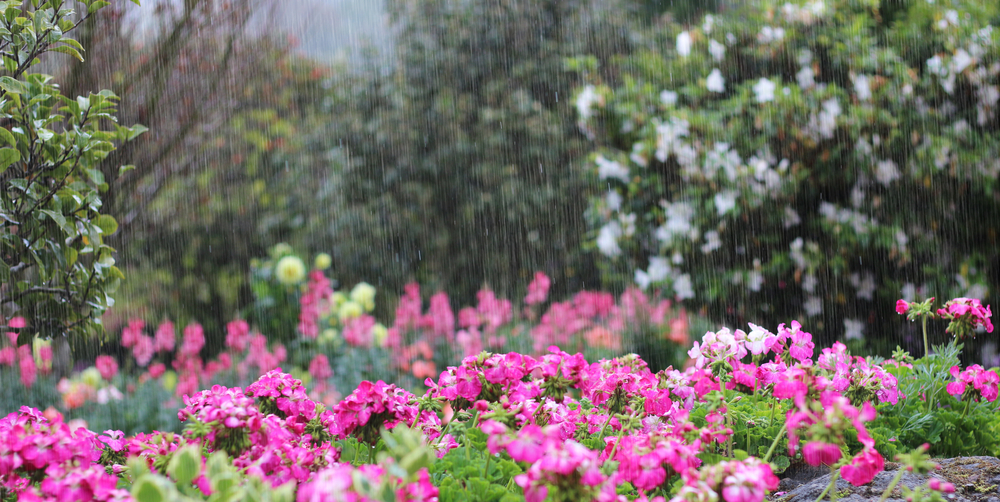
This article was originally published on May 26, 2022.
Building Your Own Rain Garden: A Guide and Benefits , As urban areas expand across the planet, more challenges arise with water purification. Sewerage is one thing, but storm runoff is also a problem. Rain that falls on cities picks up pollutants or nutrients before being washed into waterways.
Rain gardens are one way to relieve pressure from water runoff. They act as sinks, absorbing rainfall back into the soil where plants or trees can use it.
“It’s a low-cost way to treat water, to remove contaminants from water and improve water quality,” said David Deegan, a spokesman for the US Environmental Protection Agency’s Boston regional office.
Why a rain garden is important
Before we invented cities and concrete cities, forests and grasslands had a natural way of dealing with runoff from rainstorms. The soil will absorb this water and the roots of plants and trees will suck up much of it before it has a chance to seep into nearby rivers and lakes.
But as cities grew larger and larger, relying more on concrete sidewalks, roads, and glass building facades, these new structures diverted rain over large areas into drains. The runoff then drains into rivers, where treatment facilities sometimes filter it.
“Rainwater hits roofs, parking lots and streets and drains into waterways next to them,” Deegan says. “You’re concentrating water in less space.”
The problem is that rain picks up pollution as it travels through cities, whether it’s trash, fertilizer or chemicals like road salt in winter in the northern regions. In smaller towns or cities without water treatment facilities, these nutrients can alter the ecology of waterways and other bodies of water. They can lead to an increase in blue-green algae (cyanobacteria) bloom.which can cause health problems for humans and wildlife.
“We have concerns in many watersheds in the Northeast about elevated nutrients and the impacts they’re causing,” Deegan says.
It can also create a bad aesthetic for cities, which can affect tourism and general tranquility. “If the water looks kind of green or greasy, you’re probably not going to dive in,” Deegan says.
Cities with water treatment facilities can also find runoff expensive. Some sources estimate cities need billions of additional dollars to manage stormwater in the U.S. The EPA has even created a public outreach program to help people reduce stormwater runoff, called Drink the rain.
But there are other reasons to build a rain garden other than pollution and regional water supply. These landscape features can also help properties control water runoff problems. There may be boggy parts of your yard near your roof drain. Or, water can pool in low-lying areas of your yard during wetter seasons. Rain gardens can help drain and absorb some of this excess water runoff.
What is a rain garden?
If residents and businesses implement rain gardens, they could fill some of the funding gaps. In essence, they are nothing more than fantasy holes. You can dig ditches on the side of the road or spread them between the parking stalls or create a garden with specific infrastructure underneath. The idea is to give the rain a place to collect locally before it hits the storm drain or simply washes off the parking lot into a nearby creek.
In addition to holding water locally, many plants in rain gardens also help filter out excess nutrients that can leach from fertilizers into lawns and gardens. They can filter out some chemicals, preventing them from reaching waterways and ultimately our oceans through absorption, decomposition and other processes.
The region may vary in the type of rain garden you may need, as it depends on the local ecology and amount of rain. But the general rain garden needs a basic area of small rocks or sand. The EPA has a database this can help determine which plants might work best in a rain garden depending on your area.
How to build one
At a simple level, it all starts with mining. When creating a rain garden, you should dig everywhere from one to five feet deep—although even half a foot may be sufficient, depending on the area. Next, fill the hole with larger stones, then cover it with a layer of smaller stones about the size of a large marble or walnut.
“Basically, you want to dig a pit and put in materials to increase drainage, then put in a layer of sand,” Deegan says.
Depending on your aesthetic taste, you can either leave stones exposed on the surface or you can cover them with sand. You can also add some landscape fabric to keep sand and other sediment in place. Then you can put a layer of topsoil or mulch.
Taste and region may vary depending on what is appropriate locally. Deegan says ornamental grasses work well, but you can also plant flowers and shrubs. This would make it look more like a garden and less like a gutter or structural part. Here’s one example on how to build a rain garden focusing on New Hampshire. Other examples can be found at Soak Up the Rain website. You can highly customize these techniques in yards, but they are also useful in larger properties or businesses.
“They can be really quite decorative,” Deegan says.
Small cities or municipalities may find rain gardens especially useful because their budgets are smaller and they don’t have to invest in drainage or stormwater treatment, Deegan says.

